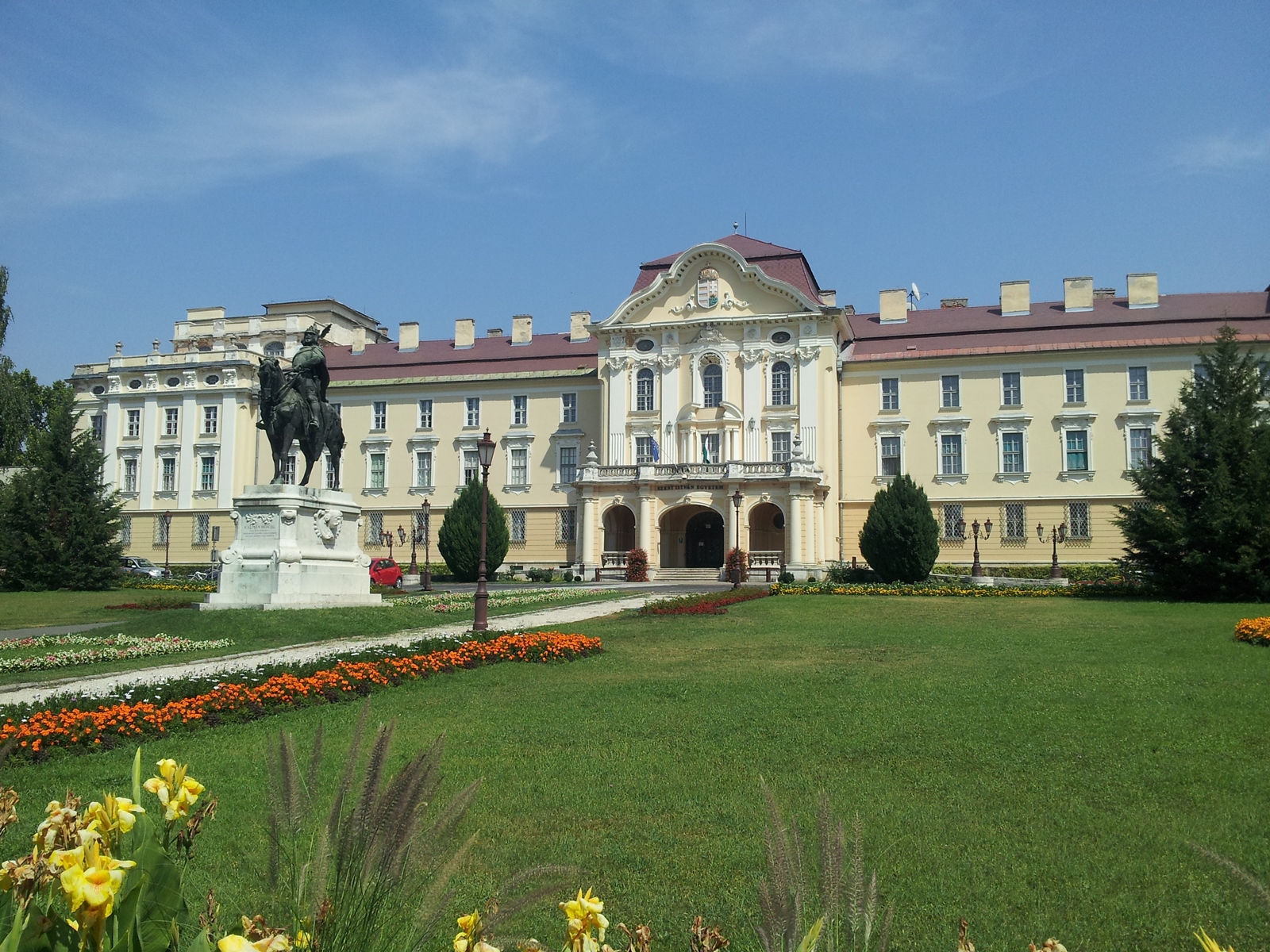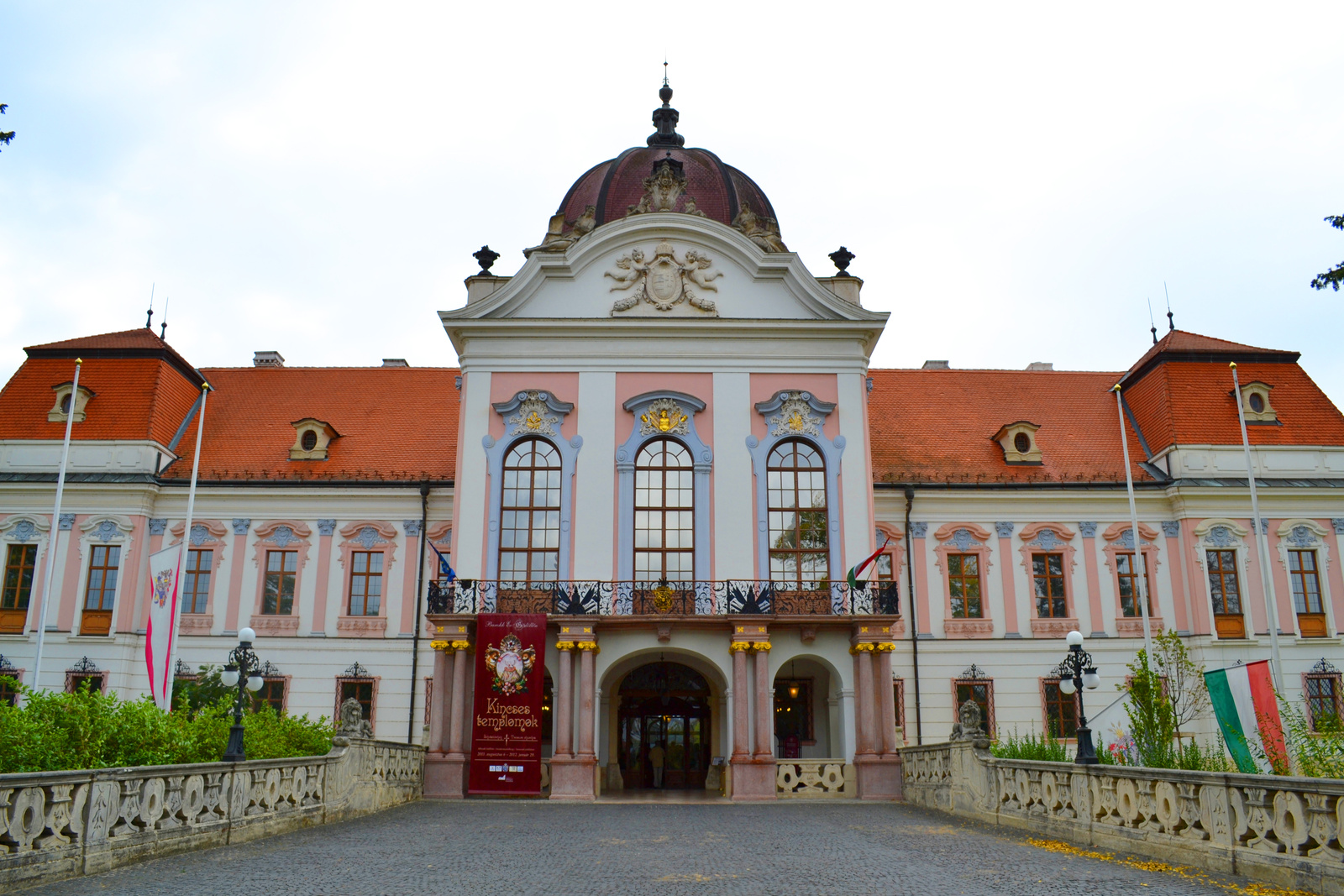Gödöllő - 3rd International Jackal Symposium
Gödöllő
Gödöllő
Last modified: 15. August 2022
Gödöllő is a town in Pest county, in the Budapest metropolitan area, about 30 km (20 miles) northeast from the outskirts of the capital. Its population is cca. 34,000 and is growing rapidly. It can be easily reached from Budapest with the suburban railway (HÉV). From Budapest Airport you can reach Gödöllő by taxi or by minibus service "miniBUD" that is the official airport shuttle service provider for Budapest Airport.
Gödöllő is home to the Hungarian University of Agriculture and Life Sciences (MATE), the main education institute of agriculture in Hungary.

The palace at Gödöllő was originally built for the aristocratic Grassalkovich family. Franz Josef, Emperor of Austria and King of Hungary and his wife Elisabeth ("Sisi") later had their summer residence here.

Geography
Gödöllő lies in the Gödöllő Hill Region. Compared to the size of the town, it has many parks :Erzsébet Park (park of Empress Elisabeth of Austria), Kastélypark (palace park), Alsópark (downtown park) and the university park. Gödöllő has a brook as well, called Rákos-patak.
History
As far back as the Stone Age, this area was populated. The earliest evidence of occupation is from the Roman period. The earliest available written data on the property rights in Gödöllő date from the early 14th century, at which time the town was separated from the larger community of Besnyő. The settlement was then owned by families of the lesser nobility. By the middle of the 15th century, Gödöllő developed into a village.
After the disastrous defeat at Mohács in 1526, the invading Turkish troops occupied Buda and then Gödöllő, too. As a result of this, the population decreased to merely a few families. By the mid-17th century, Gödöllő again became a village. Its proprietor, Ferenc Hamvay, was the first owner who resided in the locality, in his country house in the village centre. At that time, the village consisted of a few houses with walls of wattle and daub and thatched roofs in addition to the mansion and the reform church.
A decisive turn in the life of Gödöllő was brought about by Antal Grassalkovich I (1694–1771), one of the most notable noblemen of 18th-century Hungary. Grassalkovich, born of an impoverished family of the minor nobility, began his career as a lawyer in 1715. Increasing in political power and wealth, Grassalkovich planned the development of a large estate, having its centre in Gödöllő. This became possible after the death of Krisztina Bossányi in 1737, when Grassalkovich successively purchased the properties from her heirs. He began to build his palatial residence as early as 1741, which, as the greatest Baroque manor house in Hungary, is even today the principal landmark of Gödöllő. Grassalkovich, who curried favour with King Charles III and Queen Maria Theresa, also managed very successfully the properties of the treasury. For his economic and political abilities, he received first the title of baron and later on became a count. On his estates, he built 33 churches, including the church in the holy place of Máriabesnyő, and the chapel of the mansion house in Gödöllő. In the centre of Gödöllő, he had rows of houses built and settled German artisans and craftsmen there, thereby increasing the number of Roman Catholics alongside the Reformed population. Owing to his village-planning activities, Gödöllő became a country town in 1763, with the right of holding markets.
The son and the grandson of Grassalkovich I cared little for the estate. Later the mansion house came to be the scene of an important political event. In the course of the spring campaign of the 1848-1849 War of Independence, the Hungarian soldiers gained a victory in Isaszeg on 6 April 1849. After this, Lajos Kossuth and his generals set up quarters in the mansion house of Gödöllő. Here a war council was held where the idea to dethrone the Habsburgs and to fight for Hungarian independence emerged.
In 1850, a banker, György Sina, purchased the estate of Gödöllő. He, and later his son, rarely stayed in Gödöllő; they considered the transaction merely a capital investment and in 1864 sold the whole of the property to a Belgian bank. The Hungarian state bought it back from this bank in March 1867 and gave it, together with the mansion house, to Francis Joseph I and Empress Elisabeth of Austria ("Sissi") as a coronation gift. From that time on, the royal family stayed in Gödöllő mainly in spring and autumn, and this resulted in a significant upswing in the life of the town.
The agrarian character of the village began to take shape at the tum of the century. The legal successors of the agricultural training institutes and model farms established in the territories of the royal demesne are still operating today. Besides, the number of artisans further increased since, partly because the royal summer resort was here; no big industry had settled in the town.
Gödöllő at the turn of the century also wrote its name into the history book of Hungarian art. From 1901 to 1920, the only organised artists colony of the period of the Hungarian Art Nouveau was working here.
This was the time when secondary school teaching started in the community. The Grammar School of the Minorites opened its gates in 1911. By 1924, the Grammar School of the Premonstratensian Order had also been built.
In autumn 1918, in the "manor house" of the town, King Charles IV accepted the resignation of the Hungarian government. Around this time the manor house was briefly occupied by Prime Minister Mihály Károlyi. In 1919, military general staff of the Hungarian Soviet Republic had their headquarters in the manor house. Regent Miklós Horthy occupied the Royal Palace from 1920 until 1944.
Gödöllő in the area around the royal palace hosted the 4th World Scout Jamboree during 2–13 August 1933 at the Royal Forest of Gödöllő. A total of 25,792 scouts from 54 nations camped on the site. In 1939 the royal park also hosted a jamboree of Girl Scouts.
After World War II, the development of the community took a new turn. Soviet troops were stationed in part of the mansion house, while in a larger part there was a social welfare home. In contrast to its earlier character as a summer resort, industry started in Gödöllő. The first step in this direction was the building of the Ganz Factory of Electric Measuring Instruments in 1950, which was followed by other industrial plants. In the same year, the University of Agricultural Sciences moved into the buildings of the closed-down institute of the Premonstratensian. This meant the completion of the community's character as an agrarian centre and resulted in a further expansion of the network of agricultural institutions linked to the university.
On 1 January 1966, Gödöllő was promoted to the rank of a town. The present face of the town began to take shape at that time. The old rows of peasant houses disappeared one after the other, giving place to housing estates and public institutions. In the cultural life of the town, a new era started in 1981 when the "Sándor Petőfi" Cultural Centre was inaugurated. In 1978 the collection of mechanical machinery of the Agricultural University was opened.
Political changes which came about at the end of the 1980s and the beginning of the 1990s brought about significant changes in the life of Gödöllő, too. Some of the industrial projects settled here in the 1950s closed, while others which were viable were privatised. The number of industrial and service units in private ownership increased and quickly transformed the appearance of the town. In 1990, the Premonstratensian returned to Gödöllő and, after having opened their school, built their church as well. After the departure of the Soviet troops, the process of renovating the almost ruined Grassalkovich mansion house began, and although work continues, the majority of the Royal Palace is open to visitors as a museum and concert venue.
Source: Wikipedia

